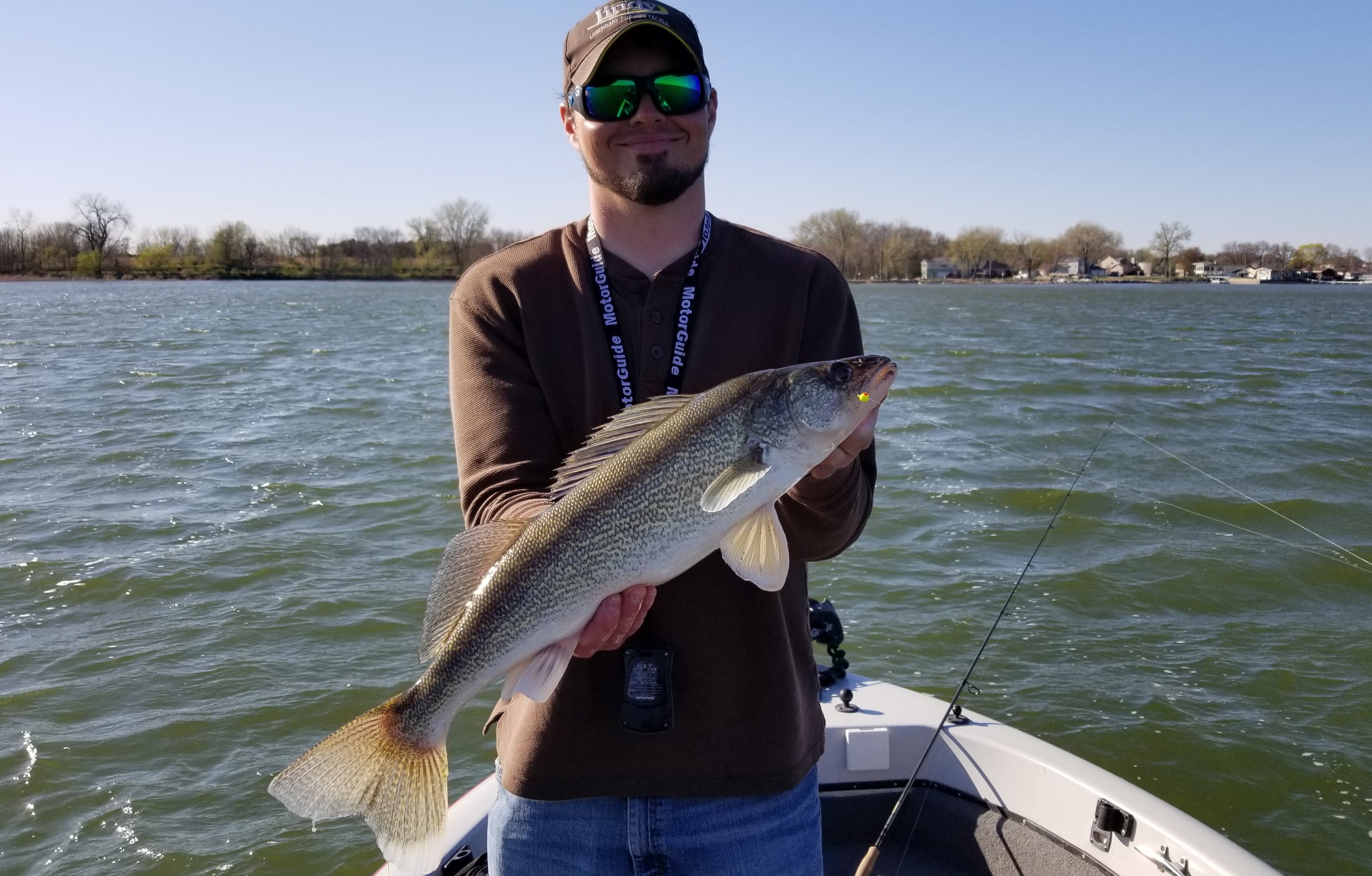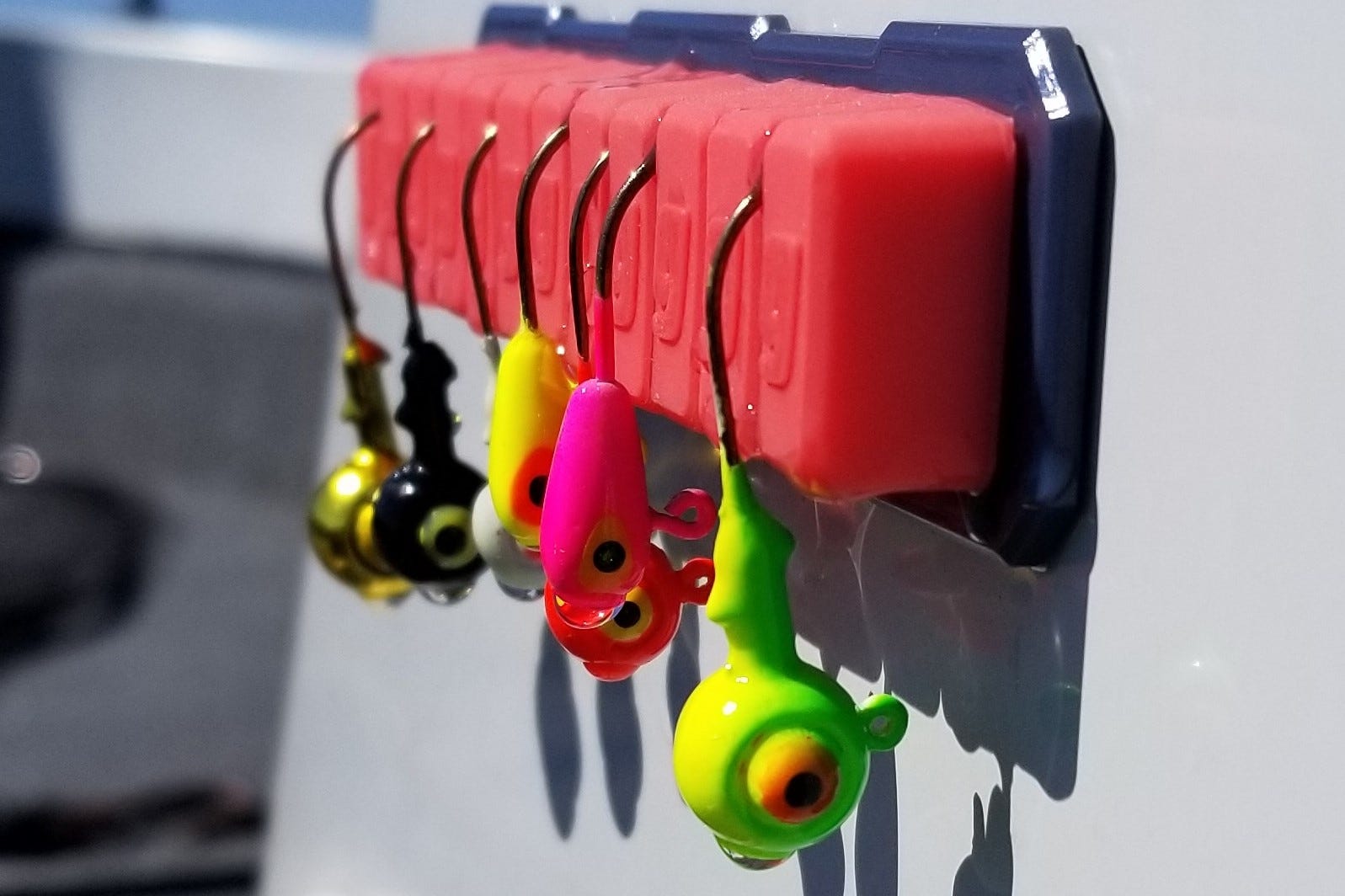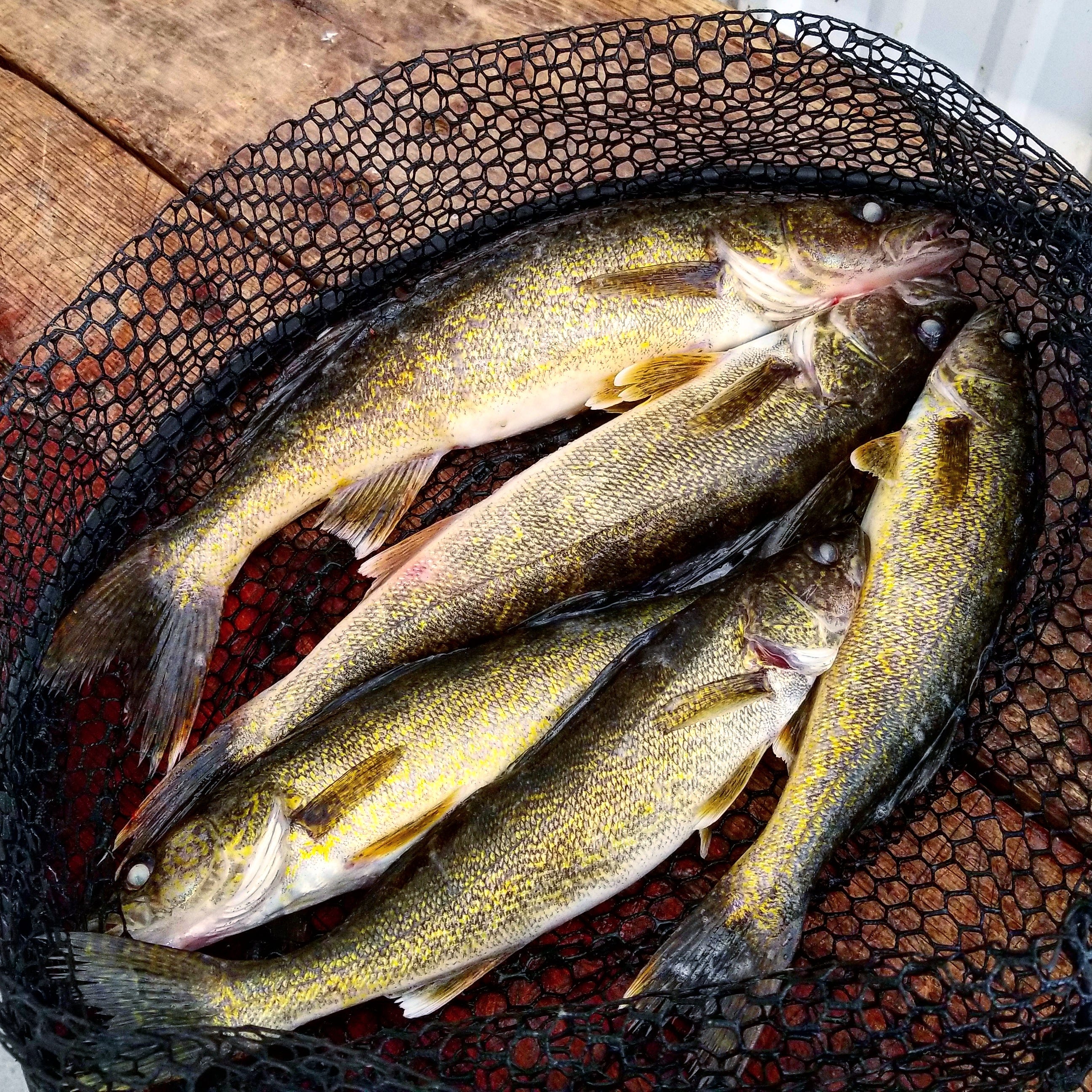- May 17, 2022
Spring Walleye Fishing Tactics: Locating, Jigging & Rigging Early Season Eyes
Locating high potential walleye areas and choosing the most effective bait presentations will increase your opportunity to enjoy great early season walleye action.
Spring walleye fishing can produce of the best walleye action of the year in the upper northern US and southern portions of Canada. Water temperatures are rising, and the fish are starting to move shallow for their yearly spawning cycle. This cycle can start weeks prior to the actual spawn and can stretch a week or two after walleye have spawned out. Spring walleye fishing can produce tremendous action, but timing the bite is important and a few key factors can help you determining when to hit the water and when to wait.
Once female walleye spawn out, they transition between the spawning locations and summer hunting grounds. This tends to be the most difficult period for many walleye anglers. Knowing how to recognize the “fish highways” during the transition will give you the upper hand on the walleye.
While location is important, it isn’t the only driving force behind a successful early season walleye outing. Walleye spend most of their lives thinking about food and where they are going to find their next meal. Knowing what forage species are present, and where they are during the spawn and post spawn, narrows the location search and helps determine presentation options. Jigging for walleye and rigging for walleye are critical presentations for matching forage and presenting offerings naturally this time of year.
So, how do locations and presentations tie together? Walleye tend to frequent similar locations across most bodies of water. They also tend to feed on similar forage. Cracking this pattern and putting the two together leads to successful spring walleye fishing. Let’s walk through early season walleye spawn and post spawn locations and look at presentations that are reliable during this period: jigging and rigging for walleye.
The Spawn


The first thing to think about when targeting spawning walleye is where they spawn. Males move to spawning grounds shortly after ice out while female walleye begin to move in when the water temperature nears 40 degrees, laying eggs soon after. Spawning locations are generally shallow, less than five feet deep, and consist of clean rock and gravel with a bit of current. The current keeps eggs clean as well as providing oxygen to the eggs for proper growth.
Locating these hallowed spawning grounds can be easy. With today’s technology-driven world, most anglers have some sort of “marine map” available via a phone app, favorite graph or highly detailed paper copy produced from one of these sources. Begin by looking for shallow, gravel-rich locations all around the perimeter. Next, check for any areas that might have a current source nearby. Creeks, streams, and rivers are all good locations to find spawning walleye. If the body of water doesn’t have a current source available, then pay attention to wind and the direction it has been blowing. This provides enough current for spawning walleye when the conditions are right.
As mentioned, water temperature is critical for spawning walleye. Female walleye lay their eggs in water temperatures that are in that 40- to 50-degree range. Monitoring water temperature in the spring greatly increases your odds of hitting the glory period where the fish are active. It usually begins at the 40-degree mark and ends at around 45 degrees, when spawn starts to pick up. This is when you typically catch larger females as they move into the gravel.
Lures that produce the most catches during this time mimic the forage the walleye are eating. A jig tipped with live bait will entice walleye during the spawning period. Since plenty of other anglers will be keying on the same conditions, it is important to keep in mind the word “mimic.” The jig and live bait should look as natural as possible.
The best jig that fits this scenario is a Lindy Live Bait Jig. It has a wide gap hook and is properly balanced to keep live bait at a natural horizontal position to mimic the real thing. In clear water, natural colors dominate. In dirty or stained water, brighter jigs will produce more bites.
The best presentation at this time is to fan cast the Live Bait Jig and slowly reel it back while popping it off the bottom using short hops. The fish will be closer to the bottom, so keeping the bait down toward the gravel and rolling it slowly presents an easy meal for them while they cruise the shallows.
When deciding on time of day to target spawning walleye, it is important to consider natural feeding tendencies. Walleye are predator fish and reign at low light hours. It is best to be fishing before the sun hits the water or after it has gone behind the tree line. This is when walleye will be most active in the shallows.
Post Spawn Transition


When the spawning frenzy subsides, female walleye begin their transition toward summer hunting grounds, making a few stops along the way, with males following a couple of weeks after. During this period walleye fishing can be difficult. Finding a food source is critical in locating transitioning walleye. Remember the forage will follow cover or structure.
To find these transition areas, use the same mapping source that was used for finding spawning locations. Since forage minnows follow structure to evade danger, and walleyes make multiple stops on their way to summer locations, it is best to look for structure adjacent to the spawning grounds. Weed patches, boulders, rock piles, steep drop offs, and elevated flats near spawning areas are good starting points.
Walleye Highway System


Weed patches hold fish all year. The broader the foliage, the better, in this instance. Post spawn walleye will hang around these patches all spring and into summer as they provide food and lessen light penetration. Casting a 1/8-ounce Lindy Jig or 1/16-ounce Lindy Live Bait Jig (tipped with a minnow or leech) over top of these weed patches and tapping the top leaves with a slow retrieve will produce strikes from hungry walleye below.
Finding “weed pockets” is essential for maximizing success. Walleye will hunker down at the base of the weeds or suspend slightly below the foliage. Cast the same size jig over the pockets and tap the weed tops before letting the jig fall right next to the stems of the weeds. The slow fall of the lighter jig triggers a bite (slight tap feeling) from the walleye hanging just below the foliage areas.
If weeds are less dense (or absent) in a body of water, and sunlight penetrates the water surface, then adjusting location and presentation to other adjacent areas to spawning grounds is needed. Looking at a contour map of the area in question, identify the first steep break away from the spawning location, as well as any large boulder or gravel areas nearby. Generally speaking, the most productive contour areas will have flat top basins.
Walleye will typically hang around these locations up to a month after the spawn, ambushing minnows as they swim off the contour as well as on top of the flat areas. When the water temperatures begin to rise over 55 and 60 degrees, walleye will continue toward their summer grounds.
Intercepting these fish is accomplished a simple tactic that has been around since the late 1960s: Lindy Rigging. A walking weight, barrel swivel (or swivel clip), lengthy leader of your preferred test fishing line, and a single or double snelled hook tipped with a leech, minnow, or nightcrawler make up the Lindy Rig.
Drop it to the bottom and creep along in your boat at 0.2 – 0.4 mph keeping tension on the line at a 45-degree angle. This angle is important in keeping the rig running correct by allowing the angler to pick up the weight and advance it forward, always keeping tension on the weight. When the bait pauses, the walleye strike it.
The simplest way to fish these steep, flat, rocky areas using the Lindy Rig is by zig zagging back and forth from deep to shallow and back again. Walleye will pick up the bait as it begins dropping or entering the flat. You’ll likely feel only a small tick on the line. Drop your rod tip for line slack and set the hook just before the line goes tight (approximately 2 seconds).
Locating early season walleye can be difficult for some anglers. Location and presentation are critical in cracking patterns quickly. Understanding these locations and why fish use them help anglers make the most of each trip. Presenting the bait in a natural way to the fish increases strikes. The more natural the bait looks, the more likely walleye are to eat it.



